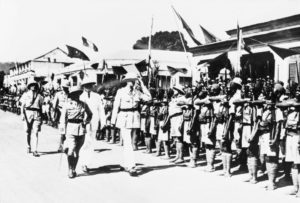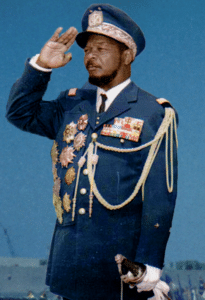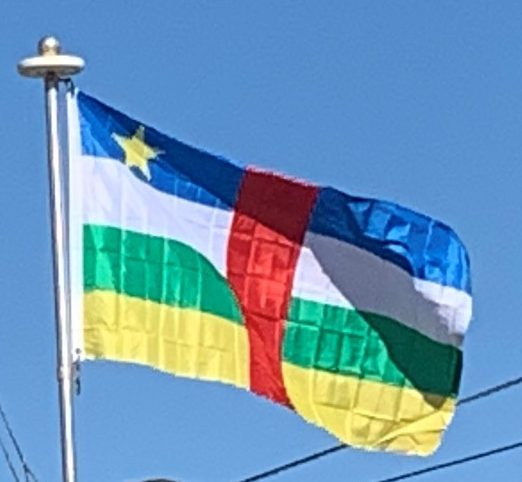
In September 1940, during the Second World War, pro-Gaullist French officers took control of Ubangi-Shari and General Leclerc established his headquarters for the Free French Forces in Bangui. In 1946 Barthélémy Boganda was elected with 9,000 votes to the French National Assembly, becoming the first representative of the CAR in the French government. Boganda maintained a political stance against racism and the colonial regime but gradually became disheartened with the French political system and returned to CAR to establish the Movement for the Social Evolution of Black Africa in 1950.
Since Independence (1960–Present):
In the Ubangi-Shari Territorial Assembly election in 1957, MESAN captured 347,000 out of the total 356,000 votes, and won every legislative seat, which led to Boganda being elected president of the Grand Council of French Equatorial Africa and vice-president of the Ubangi-Shari Government Council. Within a year, he declared the establishment of the Central African Republic and served as the country’s first prime minister. MESAN continued to exist, but its role was limited. After Boganda’s death in a plane crash on 29 March 1959, his cousin, David Dacko, took control of MESAN and became the country’s first president after the CAR had formally received independence from France. Dacko threw out his political rivals, including former Prime Minister and Mouvement d’évolution démocratique de l’Afrique centrale (MEDAC), leader Abel Goumba, whom he forced into exile in France. With all opposition parties suppressed by November 1962, Dacko declared MESAN as the official party of the state.
On 31 December 1965, Dacko was overthrown in the Saint-Sylvestre coup d’état by Colonel Jean-Bédel Bokassa, who suspended the constitution and dissolved the National Assembly. President Bokassa declared himself President for Life in 1972, and named himself Emperor Bokassa I of the Central African Empire (as the country was renamed) on 4 December 1976. A year later, Emperor Bokassa crowned himself in a lavish and expensive ceremony that was ridiculed by much of the world.

In April 1979, young students protested against Bokassa’s decree that all school attendees would need to buy uniforms from a company owned by one of his wives. The government violently suppressed the protests, killing 100 children and teenagers. Bokassa himself may have been personally involved in some of the killings. In September 1979, France overthrew Bokassa and restored Dacko to power (subsequently restoring the name of the country and the original government to the Central African Republic). Dacko, in turn, was again overthrown in a coup by General André Kolingba on 1 September 1981.
Kolingba suspended the constitution and ruled with a military junta until 1985. He introduced a new constitution in 1986 which was adopted by a nationwide referendum. Membership in his new party, the Rassemblement Démocratique Centrafricain (RDC), was voluntary. In 1987 and 1988, semi-free elections to parliament were held, but Kolingba’s two major political opponents, Abel Goumba and Ange-Félix Patassé, were not allowed to participate.
